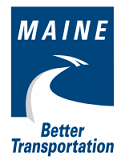Strategic Plan Update 2018-2021
May 1, 2018
Foreword
Founded in 1939, the MBTA is a non-partisan voice for promoting a safe, efficient transportation network for Maine. With nearly 700 members representing municipalities, businesses and individuals with common interests, the association advocates for funding of a multimodal transportation network – air, roads, rail, port, transit, bicycle and pedestrian facilities – to serve communities and citizens throughout the state.
MBTA is designated by the IRS as a 501(c)(4) exempt organization. A related foundation [501(c)(3)] supports scholarships and education.
MBTA leadership updated its strategic plan in May of 2018. The most recent plan had been created for 2014 to 2018. Prior plans were developed in 2001 and 2006.
Mission Statement
To improve the quality of life for Maine citizens by advocating for a safe, efficient transportation infrastructure network.
Goals
Four goals were set to advance the mission. The goals are the core competencies of MBTA to which resources must be allocated. 
- I. Advocate – Continue to be the recognized leader in supporting an enhanced transportation infrastructure.
- II. Inform – Enhance the public’s understanding of the importance of transportation infrastructure for quality of life and the economy.
- III. Collaborate – Connect and collaborate with public and private organizations to advance a better transportation network.
- IV. Lead – Lead the charge to support a better transportation infrastructure network through MBTA efforts and resources.
Committees
It was suggested that committees be renamed and carefully aligned with the four goals (advocate, inform, collaborate and lead).
To monitor the strategic plan, it was suggested that the plan be a part of every board agenda. Staff may create a plan of work to break down expectations by year and quarter, assigning responsibilities to committees and accountable persons.
Strategies and Priorities
Strategies are necessary to advance the goals. The leadership asked that terms such as “maintain” be eliminated in favor of challenge, accountability and partner relationships.
- Advocate – The recognized leader in supporting an enhanced transportation infrastructure through government relations.
- A. Taking Action – Position MBTA to aggressively lead efforts for safe, efficient transportation.
- Enhance educational campaigns to systematically communicate issues and identify solutions.
- Build the strongest coalition possible on transportation infrastructure.
- Assess and poll government officials regarding understanding, positions and roadblocks to funding better transportation.
- Consider the viability of a statewide referendum effort to support funding for transportation infrastructure.
- B. Governmental Relationships – Build powerful relationships that have significant meaning in the exchange of information and serve as a catalyst for action.
- Enhance communications with the Governor and Administration.
- Strategically develop a formalized plan for consistent meetings with MaineDOT and the Commissioner (formalizing a schedule of meetings and desired outcomes.)
- Monitor and influence Legislative Committees, including Appropriations and Transportation.
- Maintain and strengthen federal relationships that influence and report on infrastructure funding.
- C. Audiences and Partners with Influence – Expand collaboration with groups having mutual interest, including municipalities, chambers, transportation corridors and economic development to expand influence.
- D. Messaging – Develop the “story” of the impact of infrastructure (negative and positive) supporting it with anecdotes and data.
- A. Taking Action – Position MBTA to aggressively lead efforts for safe, efficient transportation.
- Inform – Enhance the public’s understanding of the importance of transportation infrastructure for quality of life and the economy.
- A. Expertise – Position MBTA as the expert and credible resource for all things transportation infrastructure in the state and regionally.
- B. Marketing Plan – Develop a multi-year comprehensive marketing plan to support efforts of MBTA through media, communication channels, graphics and speaking opportunities.
- Ensure that MBTA has the strongest image possible to achieve results.
- Familiarize all Maine private sector allied organizations with MBTA programs.
- C. Research and Data Development – Develop the economics and data to support advocacy and collaboration, integrating technology to build the database, create an APP, and transform publications to digital formats.
- Collaborate – Connect and collaborate with public and private organizations to advance a better transportation network.
- A. Membership Value – Engage members through conferences, regional meetings, publications, volunteering and technology for a positive membership experience.
- B. Engagement – Collaborate with existing and new public and private entities to achieve the mission.
- C. Young Professionals – Provide scholarships through the Educational Foundation and maximize the engagement of young professionals in the association.
- D. Collegiality and Fun – Facilitate opportunities to build the collegiality and connections among members.
- Lead – Lead the charge to support a better transportation infrastructure network through MBTA efforts and resources.
- A. Board of Directors – Maximize the passion and resources of the dedicated volunteer leadership.
- Maintain the involvement of organization chief principals.
- Anticipate changing attitudes about volunteer service and time commitments.
- Involve young professionals.
- B. Executive Director – Promote the advancement and plan for succession of the dedicated executive director.
- C. Professional Staff – Employ the staff necessary to support the new strategic plan and to serve a growing membership.
- D. Headquarters Office – Study the cost-benefit of leasing or purchasing an office; making a decision for office space to best serve MBTA.
- E. Technology Use – Invest in the technology necessary to support the aggressive goals of the association and functions of the association.
- A. Board of Directors – Maximize the passion and resources of the dedicated volunteer leadership.
